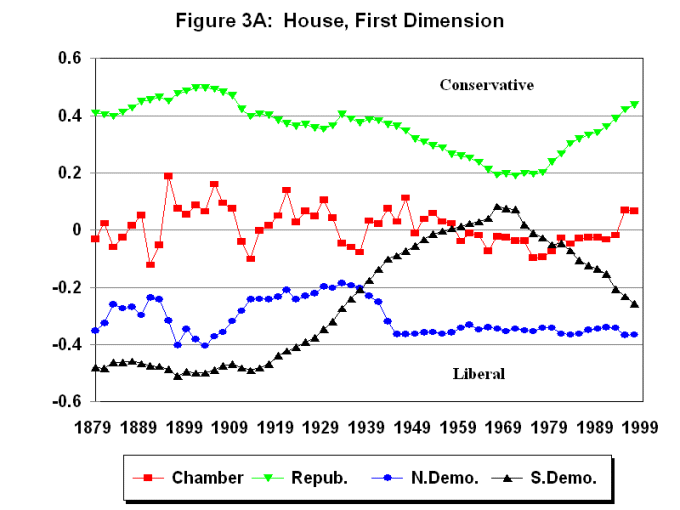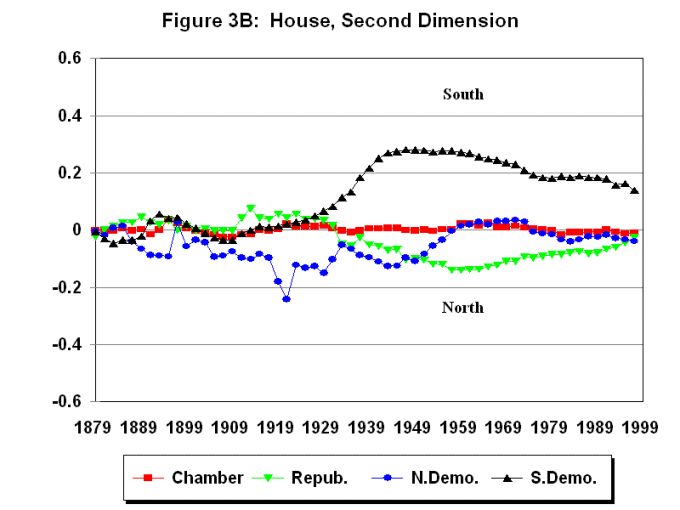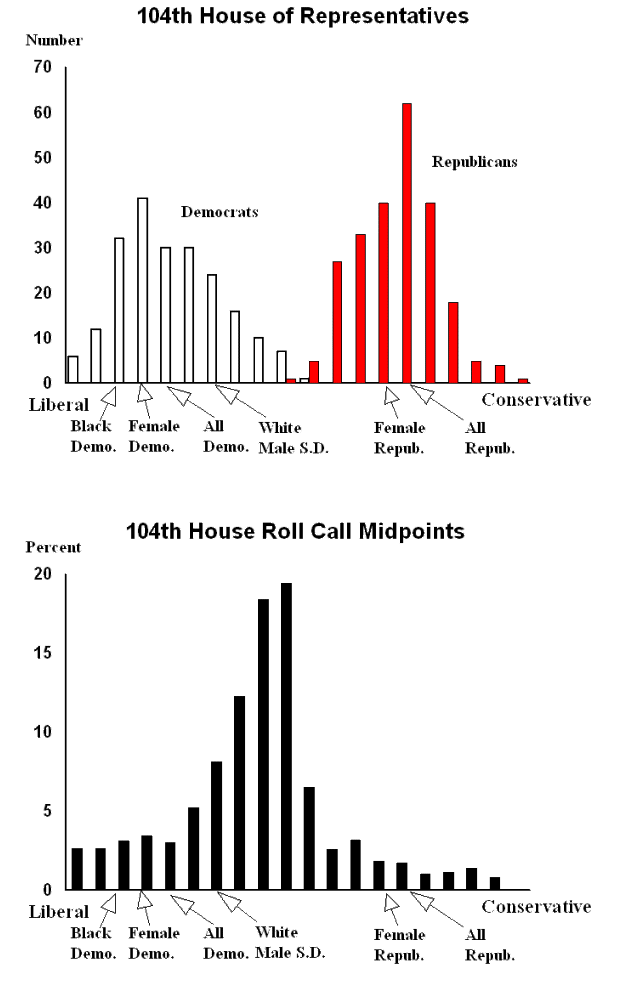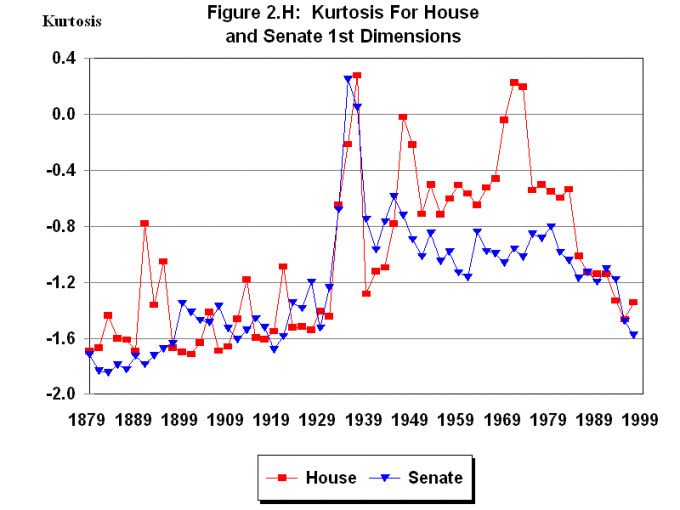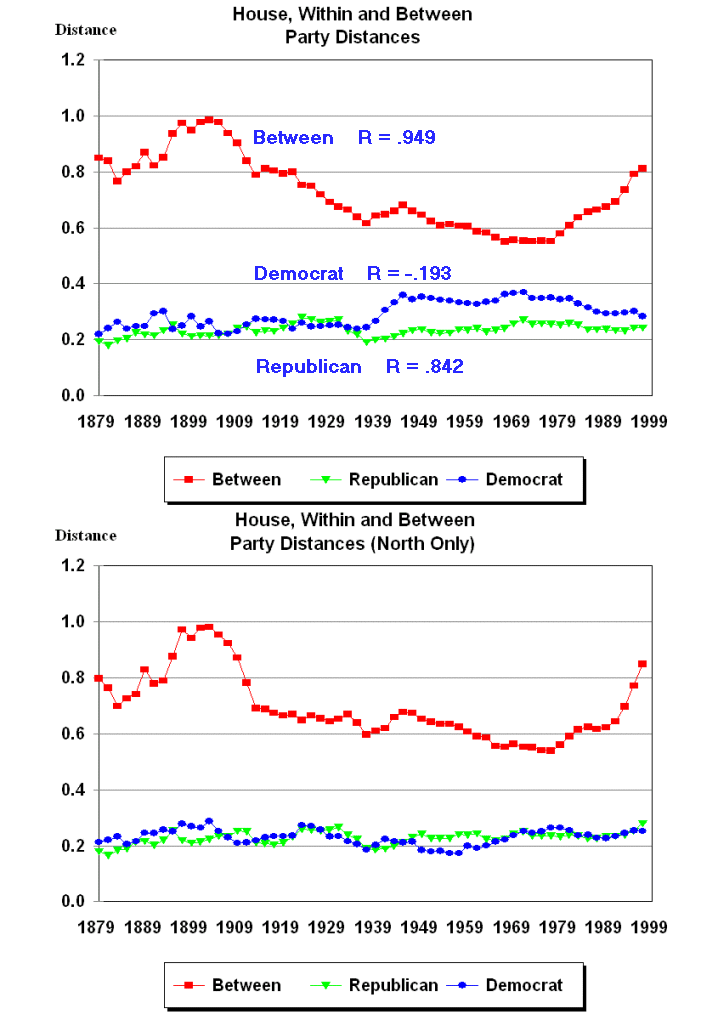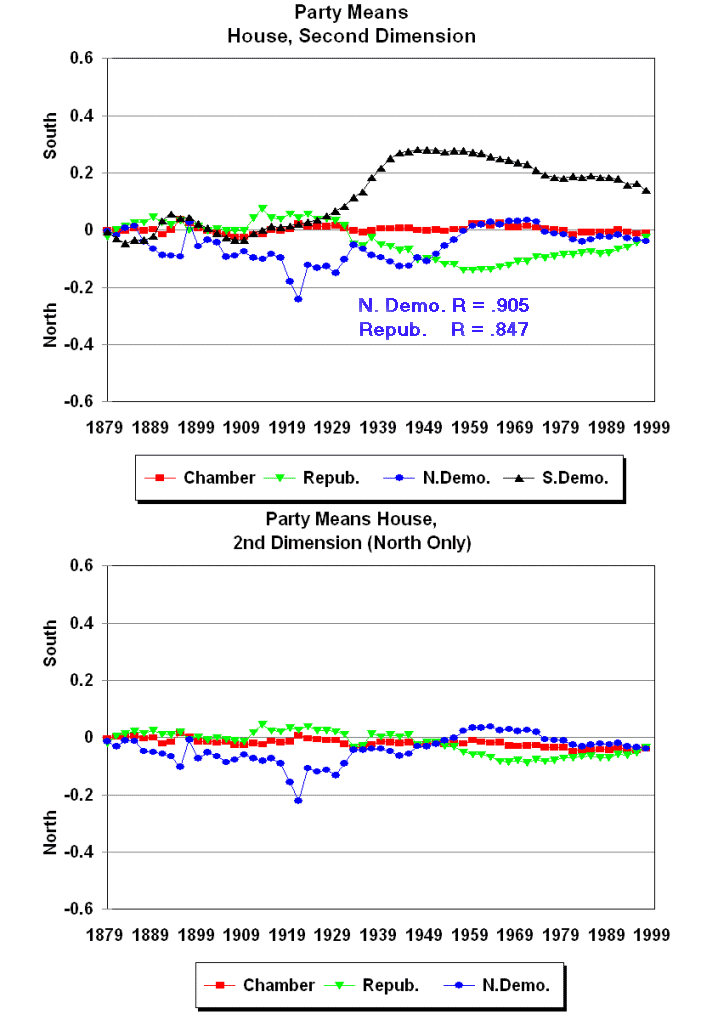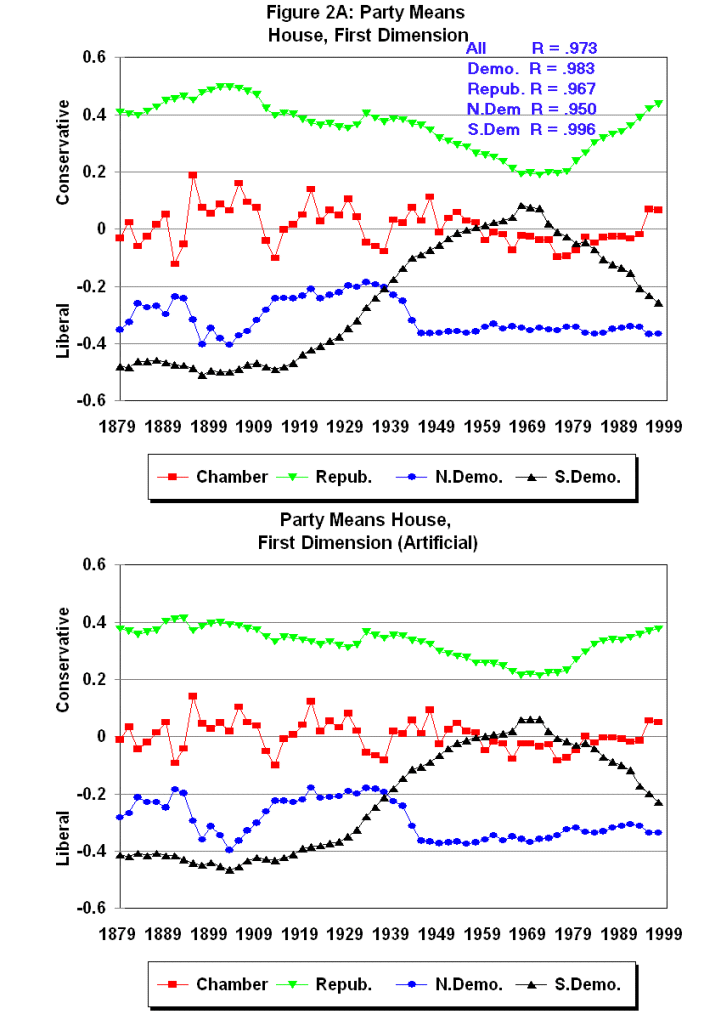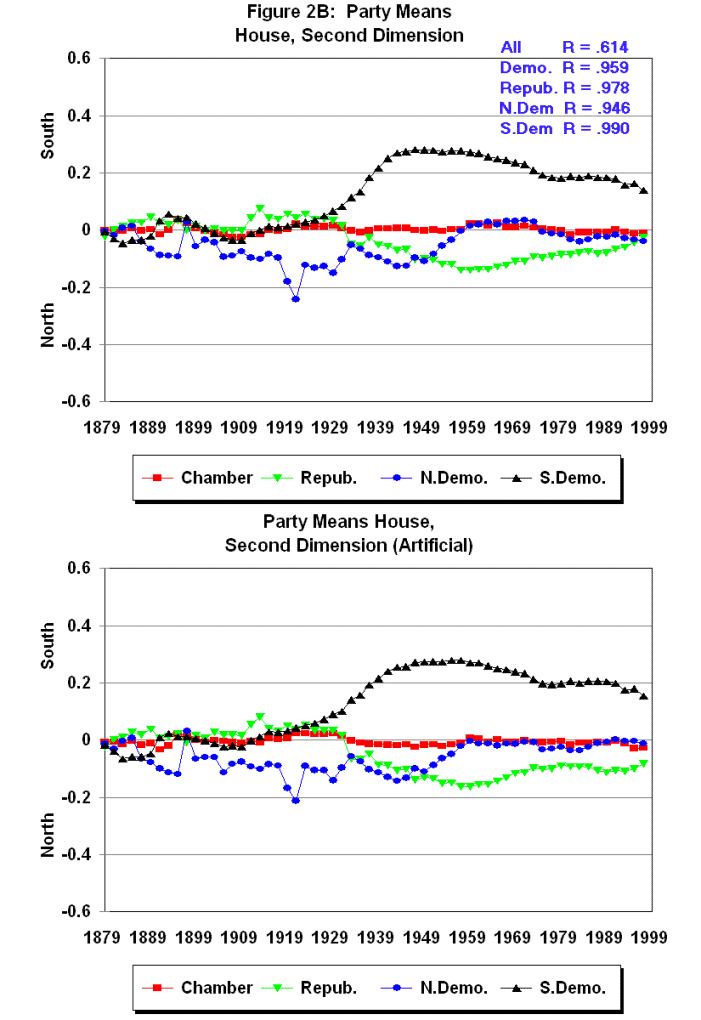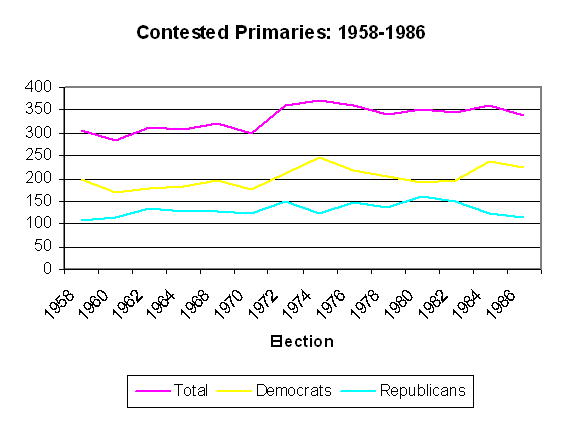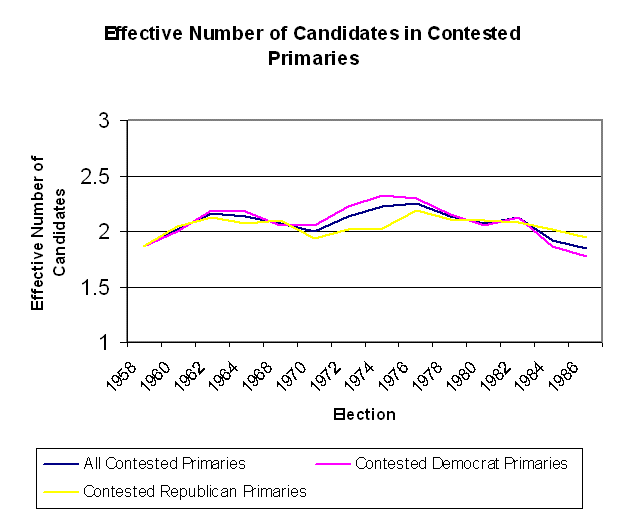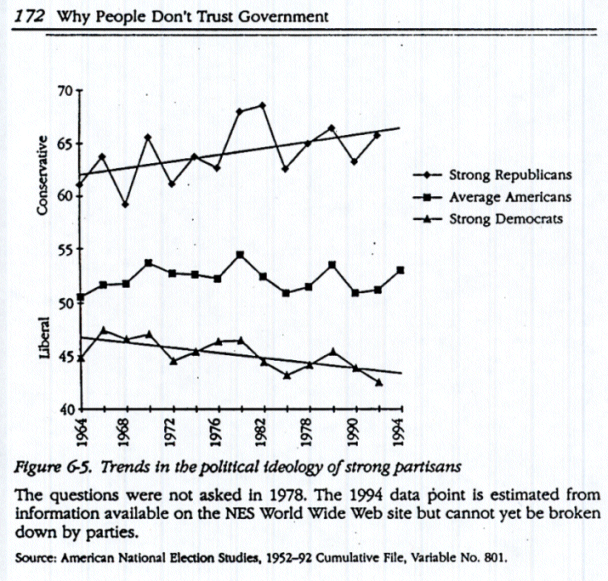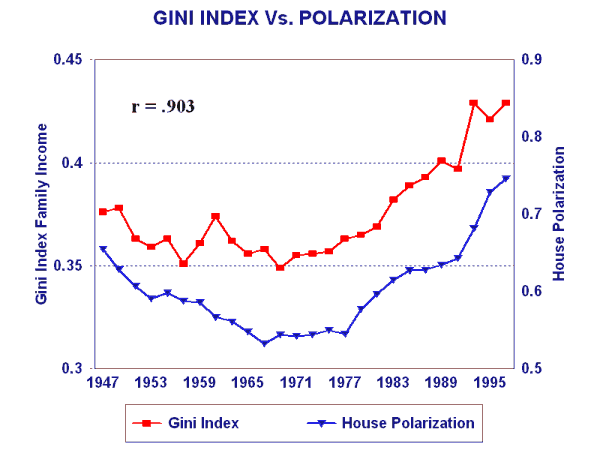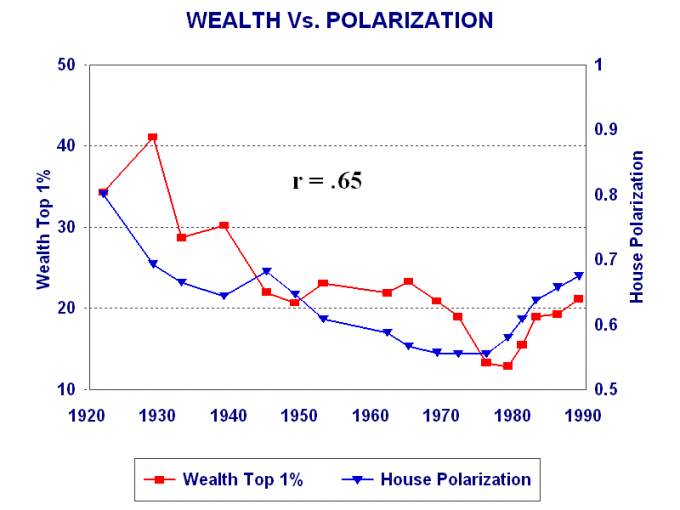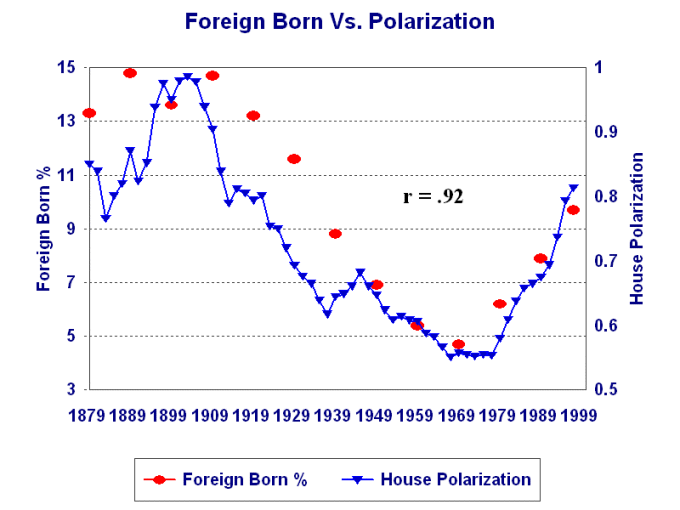Introduction: The Polarization of the Political Parties
in Congress
- Our old Work: 1959 - 1981 I.G. Ratings
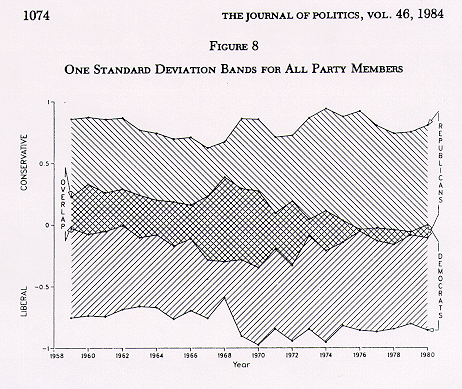
D-NOMINATE (Chap. 4 of Congress) and DW-NOMINATE (developed with Nolan McCarty)
The animated gif shows the House and Senate DW-NOMINATE two-dimensional linear scalings. The 2nd dimension is shown without the dimension weight of .31 being applied so that the structure of the two-dimensional space is more easily seen. The results are the same as we discuss in Congress: A Political-Economic History of Roll Call Voting. From the end of Reconstruction until the late 1930s congressional voting was essentially one dimensional. Beginning in the 1930s an important 2nd dimension appeared that picked up the division within the Democratic party over Civil Rights for Blacks. The clear division of the Democrats into Northern and Southern parties can be seen in the spatial separation of the "S" and "D" tokens. After the mid-1970s this division gradually disappears and voting is once again one dimensional. A very important feature that the animated gifs show is that the same forces are at work on both chambers. The two scalings are completely separate but the voting structures in the two chambers are exactly the same.
We update these trends in our recent LSQ paper: D-NOMINATE After 10 Years: A Comparative Update to Congress: A Political-Economic History of Roll Call Voting .

Document the polarization of the Congressional parties for the Post-Reconstruction period: 1879 - 1998.
These figures follow the format in Chap. 4 of Congress. They are calculated from the coordinates shown in the animated gifs and the 2nd weight is applied.
-
House Party Means 1st and 2nd Dimension
1879-1998.
